Parsi vicissitudes- Of vision and hard work | |
| - Ashok V. Desai | |
Amongst the communities whose study has suffered an eclipse are the Parsis. The reason lies in the decline of business studies, but also in the decline of Parsis as a business community. Parsi enterprise played a significant part in the rise of modern Indian industry and services. Parsis were members of the Indian trading community before the arrival of Europeans, and gained importance from the middle of the 19th century, when they entered the supply chain of opium exported from Malwa to Chinese ports. From opium exports they graduated to cotton exports and then to textile manufacture. At the time of Independence, they were important members of the industrial and trading community of western India. They also had a strong presence in the liquor trade all over the country, especially in and around British cantonments. After Independence, Parsi enterprise declined. There is still a handful of large Parsi business houses, such as the Tatas and the Godrejs. But the textile mills mostly closed down because the government discriminated against them from the 1960s onwards and favoured small power-loom sheds. State governments' discrimination in favour of sons of the soil and language-based political agitations led to the disappearance of businesses run by people who did not speak the local language, including Gujarati and Parsi businesses in Bombay. There is, however, a surviving and thriving Parsi business, Forbes Marshall, a diversified engineering company with plants close to Poona. Its main products are furnaces and industrial control instruments. In many ways, its history reflects the industrial history of India after Independence; but in some ways it also differs from the standard stories of big business. For example, it was not very successful in coping with the licence raj; and its relationships with foreign collaborators have been close, lasting and cemented by personal relations. It also stresses honesty and trust in its dealings; it is understood in the company that the smallest dishonesty — for instance, manipulation of travel bills — would lead to dismissal. These are elements that I believe have something to do with its Parsi origin. But it is its pre-Independence history that is fascinating. Forbes Marshall traces its origin to Bomanshah, who lived in Broach in the early 19th century. He owned a number of sailing ships; he bought grains locally and shipped them along the west coast and to ports across the Arabian sea. He also bought cotton from local gins, mostly owned by Parsis, and shipped it out. His youngest son, Nanabhoy, was born in 1847; he joined his father's business, and sailed to Surat, Navsari, Bombay, Calicut and Cochin buying and selling. In 1881, Nanabhoy loaded his family and household goods into bullock carts and left for Bombay. The Great Indian Peninsula Railway Company laid India's first railway line between Boree Bunder (successively renamed Victoria Terminus and Chhatrapati Shivaji Terminus by self-important rulers, and respectively called VT and CST by the populace) and Tannah (later renamed Thane) in the 1850s; by the 1870s it had been extended southwards to Arthur Bunder. The tram, a homelier version of the train, came to Bombay in 1874; Stearns and Kittredge laid a line between Colaba and Parel. They had a stable of 900 horses; six to eight were needed to pull a tram. Nanabhoy bought hay in Gujarat, shipped it to Bombay, and sold it to the tram company. He continued to bring in grains. By the 1870s, the traffic to Europe had moved from around the Cape of Good Hope to the Suez Canal, and sailing ships were replaced by coal-burning steamships. Coal had just begun to be mined in India, but it was mined too far inland in Bengal for use in ocean steamers; for them, coal was imported from Britain. Nanabhoy started importing coal from Cardiff and selling it to the textile mills in Bombay. These ventures made Nanabhoy rich. In 1897, he bought 22,000 square feet of land near Kemps Corner and built a villa; in the huge garden he planted flowers and fruit trees. Just down the road between Gowalia Tank and Nana Chowk, he built shops, from which he got good rent. That was the time when the rich went around Bombay in their own victorias. The first car was imported by a Mr Forster of Greaves Cotton in 1897. Four years later, Jamshedji Tata imported one; he became the first Indian to own a car. Nanabhoy imported a Ford soon after. His son, Jeejeebhoy, was born in 1897, and went to New High School nearby. He was good in dramatics; he played Lady Macbeth in his school's annual dramatics competition. In 1914, he joined Wilson College, which was founded in 1832 and continues to be where it was till today. When Jeejeebhoy graduated in 1918, his father offered to send him to England for further studies; but he refused. He wanted to do business and make money. So Nanabhoy gave him Rs 10,000 and told him to do what he liked. By this time, coal was being mined in western India, and railways were available to bring it to the west coast. So Jeejeebhoy started buying east Indian coal and selling it to mills in Bombay and Ahmedabad. Every Saturday night he would take the train from Bombay. On Sunday morning he would buy cotton in the Surat auction, take it to Bombay and supply it to the cotton mills. Sir Homi Mehta had cotton gins in Uganda, which produced fine cotton; Jeejeebhoy bought it from him for his clients. By 1923, Jeejeebhoy was very well off; he did not have to work so hard. So he became a member of Ripon Club, established in 1884 by Sir Pherozeshah Mehta. It was for men only; women were not even allowed into the buildings. There he had a five-course lunch, and then played bridge with businessmen and professionals. Amongst them were stockbrokers, who introduced him to share speculation. In 1925, he sold off his inventories of coal and cotton, and became Sir Homi Mehta's commission agent in Ahmedabad, supplying stores to textile mills. Although he did not last long as commission agent, he developed good business, and prospered in Ahmedabad. Then disaster struck. In 1932, the value of Jeejeebhoy's shareholdings plummeted. In 1937, he moved back to Bombay. But there he found that the swadeshi movement had destroyed the market for the British goods he used to import. Resilient as ever, he took an agency of the German firm, AEG. Just then, World War II broke out, and the Custodian of Enemy Property sequestered AEG's godown in Bombay and all the goods in it. Jeejeebhoy saw tough days. Finally, in 1942, he managed to get back the godown. There could be no fresh supplies from Germany, but he could make good money on the stocks. However, his business of import no longer had a future. The wartime import restrictions were intensified by the government of independent India. In the initial years, limited import licences were given to established importers; but by the late 1950s they were throttled out of life. That started the game of import substitution, diversification and technology development. But it belongs to Jeejeebhoy's heirs, so I will end this story here. |
Current Real News
7 years ago




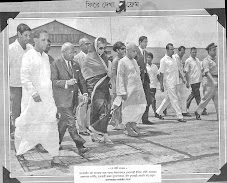



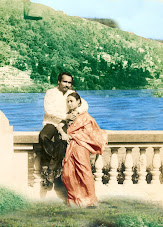






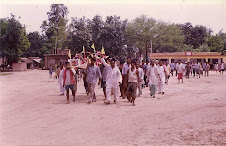

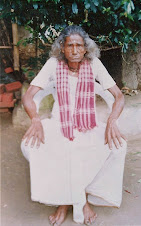
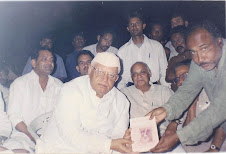
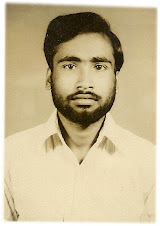



No comments:
Post a Comment